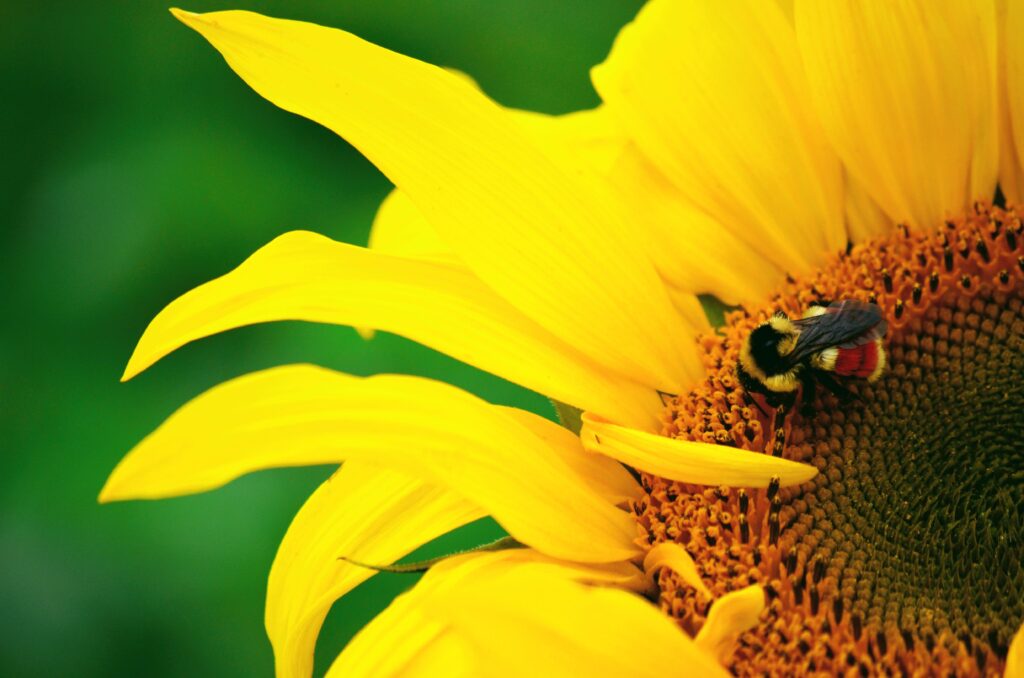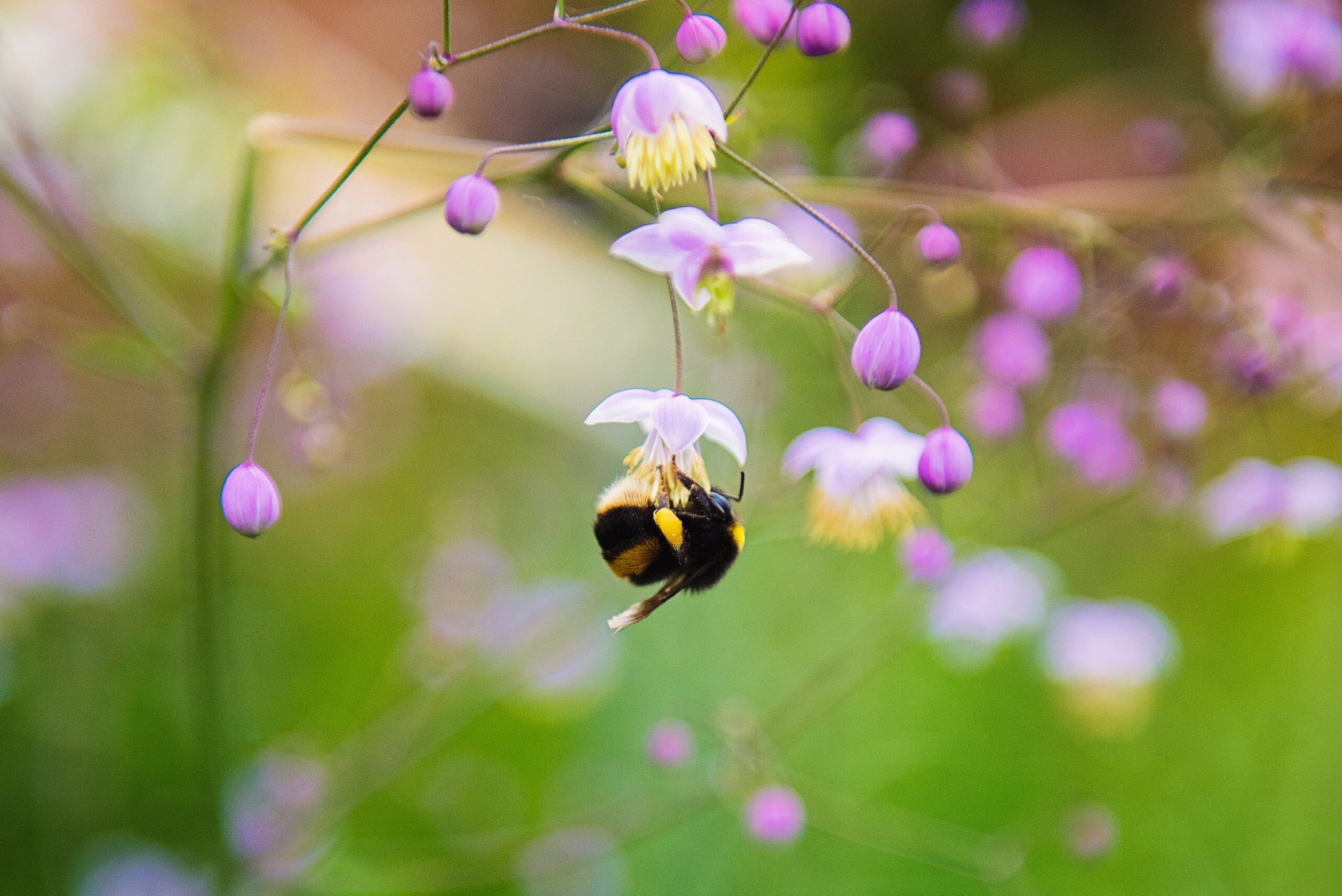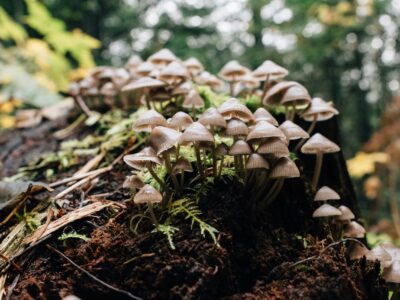All across the country, churches are taking the lead to dedicate areas of their property to native plants that local pollinators need in order to flourish. As a result, hyperlocal pollinator populations have a much higher likelihood of surviving and thriving, which means more honey, more fruit and vegetables, and more biodiversity in our backyards.
This is a blessing for everyone.
These projects are not enormous investments of time and energy. They are small contributions that help to make a global difference, launched by one or two or three people in congregations across the United States. Here are just a few examples of churches that are turning their lawns and flowerbeds into pollinator paradises:
Individual Churches Turn Lawns into Gardens
St. Paul’s Episcopal Church in Berlin, Maryland, recently held a ribbon-cutting ceremony for its new pollinator garden, completed in partnership with their thrift store, the Lower Shore Land Trust, and the community of Berlin, and St. Paul’s Episcopal Church in Georgetown, Delaware, has set aside a 112-square-foot area on church grounds to serve as a “Monarch Waystation.”
Other Episcopal churches across the United States are stepping up with similar initiatives. On the other side of the country, St. Mary’s Episcopal Church in Laguna Beach, California, has spent the last two years overhauling its property, adding drought-resistant native plants to its gardens. What was once a lawn filled with unwanted plants from parishioners is now filled with native vegetation, and their front garden features thyme, a drought-resistant ground cover.
Lyndhurst Community of Faith Church in Ohio planted a native pollinator garden in view of the busy street where the church is situated, across from a gas station and the city municipal center. The garden is filled with native species that are both practical and beautiful. Barb Holtz and John McCumber, the individuals leading the garden effort, said the design evolved over time—people don’t have to have a garden design finalized before they get started.
Cedar Ridge Community Church in the Baltimore/Washington area established a native pollinator garden in collaboration with the University of Maryland Pollinator Meadow Initiative. The church also has a half-acre of vegetable and fruit crops that grows about 2 tons of organic food each season, which is distributed to people in need through the Manna Food Center. Kids and adults alike are invited to help tend the garden each week during the growing season. The property also installed beehives that produce hundreds of pounds of honey each year and support healthy bee colonies. All of these efforts work together to improve the local ecosystem.
The Yorkminster Presbyterian Church in Yorktown, Virginia, has paired together these three vital partners as well. Every year, they plant a garden of fresh produce for Peninsula residents in the Jenny Russell Giving Garden (named for the late YPC pastor who began the vision). Church member Christine Gyure started a pollinator garden on the grounds as her Girl Scout Gold Project. Since the garden has grown and matured, YPC has seen a resurgence in the bee population in their hives, a great sign that the bee population is improving in the region.
The Bryn Mawr Presbyterian Church in Pennsylvania launched a Plant Native/Native Plant: Restoring Creation initiative as part of their Environmental Justice Committee. It supports and encourages planting native species on their church campus, in church members’ gardens, and in their community. The church collaborated with neighborhood families with young children to plant a community garden between properties along the sidewalk. Children ages 1-12 helped plant 18 native plants.
Eureka Christian Church in Eureka, Illinois, felt a call to join the pollinator movement as part of their sacred obligation to do their part to restore balance to the ecosystem. Their garden includes over 300 native perennials, including milkweed, coneflowers, goldenrod, black-eyed Susans, asters, wild geraniums, and more. The garden was planted in partnership with the Environmental Studies and Sustainability Program at Eureka College.
The Nokomis Heights Lutheran Church, a bilingual church in Minneapolis, Minnesota, planned and prepared a pollinator garden beginning in 2020 with the help of local Master Gardeners and their Creation Care team. The garden is made up of ten different species including hydrangea, Joe Pye weed, liatris, bee balm, black-eyed Susan, catmint, and more.

Image: Lyn Si
Community Collaboration and Global Initiatives
Ten new native pollinator gardens have been established in faith communities in Wilmington, Delaware, through the Sacred Grounds National Wildlife Federation (NWF) program. These gardens create wildlife habitat, reduce the risk of floods, and make a safe pollinator corridor through the city of Wilmington. They also improve the lives of congregants, empowering community engagement and increasing awareness of our connectivity to the Earth and our responsibility to tend it well.
“In spiritual practice, we become grounded in the knowledge of our connectedness to the space we inhabit, the communities of which we are a part, and the natural cycles of life within which we exist,” Rev. Shada Sullivan of the Church of the Holy City shared with the NWF in an article about Sacred Grounds Wilmington. “And as we come to know our connectedness, we grow in compassion for those around us.”
“Across the pond,” there’s even a movement throughout Ireland to dedicate 30 percent of each church’s grounds for pollinators and biodiversity by 2030. This effort includes 2,646 churches across 26 dioceses and 1,365 parishes on the island of Ireland. The initiative began in response to Pope Prancis’ 2015 encyclical, “Laudato Si’: On Care for Our Common Home,” and aligns with the agreement of countries at the 2022 United Nations conference on biological diversity (COP15) to return 30 percent of land to nature and demonstrates leadership and dedication from church communities to the cause of responding to our current biodiversity crisis.
Simple Steps to Start a Pollinator Garden on Your Church Property
All it takes is one person with a passion for pollinators to turn a boring patch of grass on your property into a floral paradise.
The U.S. Fish and Wildlife Service offers these steps to starting a successful pollinator garden:
- Choose an ideal location: pollinators like the sun, so choose a full or partial sun location with some protection from wind.
- Identify soil type: your soil type will determine which kinds of plants will grow best.
- Choose your plants: research which varieties of milkweed and wildflowers are native to your area and ideal for your light and soil conditions. Choose perennials as well as flowers that bloom throughout the growing season (spring, summer, and fall)
- Seeds or plants?: seeds are more economical but take longer to start; plants cost more, but will give you a quick return on investment and bring pollinators sooner.
- Prep your garden: remove any existing grass or plant cover, turn the soil, and supplement your garden with nutrient-rich compost or soil.
- Plant your seeds or flowers: seeds should be planted in fall and late winter to give them time to germinate while flowers should be planted according to your region’s frost guidelines.
- Wait, watch, water, and weed!
Faith and the Common Good in Canada also offers resources to help people start a pollinator garden. “Greening Sacred Spaces: Native Plant Garden Guide” offers tips for native plant gardening in your faith community.
Growing a garden is a rewarding and empowering process, uniting us with generations and generations of gardeners before us, all the way back to the Garden of Eden. Your congregation (or even your family) can turn a small patch of ground into a pollinator paradise.





 Copyright
2024
Root and Vine
Copyright
2024
Root and Vine